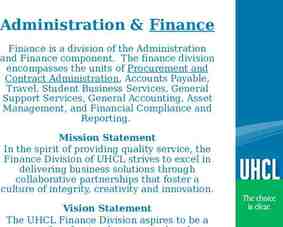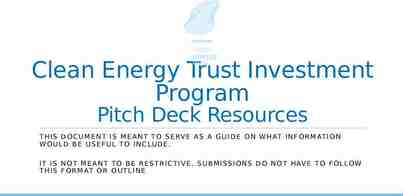Findings of DRSF Pilot testing from the perspective of SDGs and Sendai
14 Slides488.18 KB
Findings of DRSF Pilot testing from the perspective of SDGs and Sendai Framework Monitoring 13th National Statistics Convention of the Philippines 3-4 October 2016 Mandaluyong, Philippines
Context Resolution 70/2 on “Disaster-related Statistics” Sendai Framework for Disaster Risk Reduction 2015-2030 (SFDRR) and Sustainable Development Goals (SDGs). Oct.-Dec., 2016: the Expert Group decided to organize pilot tests for a provisional draft outline and summary of core principles developed as a draft Disaster Related Statistics Framework (DRSF) Pilot tests conducted in collaboration with focal point agencies (NSOs and NDMAs) in 4 countries: Bangladesh, Fiji, Indonesia, and the Philippines
Cross –cutting Issues
Sendai Framework: 1.Reduce global disaster mortality 2.Reduce the number of affected people 3.Reduce direct disaster economic loss 4.Reduce disaster damage to critical infrastructure and disruption of basic services, among them health and educational facilities 5. Increase the number of countries with national and local disaster risk reduction strategies 6.enhance international cooperation 7.Increase the availability of and access to multi-hazard early warning systems and disaster risk information SDG Target 11.5 calls for making cities and human settlements inclusive, safe, resilient and sustainable “By 2030 significantly reduce the number of deaths and the number of affected people and decrease the economic losses relative to GDP caused by disasters, including water-related disasters, with the focus on protecting the poor and people in vulnerable situations”
Basic Range of Statistics for SDG Indicators Occurrence of disasters (as the defining object for counts of affected populations) Affected Population Baseline population for relative measure of affected population (e.g. population in areas exposed to the relevant natural hazard) Direct economic loss from a disaster occurrence GDP for relevant economies Information on national and local disaster risk reduction strategies
Structure for Pilot Study Compilations
Indicator Statistics Summary Tables s 3-5 year periods SocialEconomic Activity Hazard exposure Reports from Disaster Events 1 2 3
Disaster Occurences by Hazard Type OEIWG undergoing a review of IRDR Peril & Hazard Glossary At least can classify occurences and impacts statistics at IRDR Peril & Hazard family level.
Affected Population Developing disaggregated statistics according to: Age, gender, and for vulnerable groups, e.g.: income poor and disabled. 1.1 Human, affected population (total) 1.1.1 Deaths or missing 1.1.1.1 Deaths 1.1.1.2 Missing 1.1.2 Injured or ill 1.1.2.1 Injured 1.1.2.2 Ill 1.1.3 Evacuated, relocated or displaced 1.1.5 Houses damaged or destroyed 1.1.6 In need of food aid 1.1.7 Otherwise affected 1.1.7.1 Voluntary evacuations Multiple counts, individuals (minus) C2a1 - Age groups 0-4 5-60 60 TOTAL C2a2 - Gender groups Male Female TOTAL C2a3 Urban/Rural population Urban Rural TOTAL C2a4 - Specific vulnerability groups NO TOTAL Disabled Poor
Direct Economic Loss: Agriculture Example 1st observations are in “physical terms”, e.g.: – number of hectares affected, number of livestock, tonnes of crops affected, etc. 2nd, estimates of value of impacts to stocks of economic assets (including inventories, or for case of agriculture: work-in-progress) Often, in PDNA studies, there is a 3rd step to assess indirect impacts (“losses”), e.g impact on future income, employment, gov’t expenditure, etc. Note: the object for indirect losses are flows (e.g. production and income) whereas the object of direct impact statistics are stocks (assets)
Critical Infrastructure UNISDR recommendation for categories of economic loss: agriculture, houses and critical infrastructure, cultural heritage, industrial facilities, commercial facilities. – Concept note on Methodology to Estimate Direct Economic Losses from Hazardous Events to Measure the Achievement of Target C of the Sendai Framework for Disaster Risk Reduction: A Technical Review, UNISDR, November 2015 Should develop harmonized categories for.?: Destroyed Damaged Partially damaged measurement units? Houses/dwellings Hospitals, health facilities Education facilities Religious facilities Bangladesh Fiji Indonesia Philippines (temple, mosque) (praying facilities) Other critical public administration buildings Public monuments Roads Bridges Transport equipment Electricity generation facilities Electricity grids ICT Equipment Dams Water supply infrastructure Water sewage & treatment systems (Bridges, roads and culverts) (Water control, sewage & treatment systems) Agriculture land, livestock, fish stocks, and managed forests Other critical infrastructures (Agricultural and forest land damaged from fires) Src.: Draft Report of The First Round of Disaster Related Statistics Framework (DRSF) Pilot Studies
Disruption of basic services Examples: water supply, sanitation, health care, education, housing, and food supply. They also include services provided by critical infrastructure such as electricity, telecommunications, transport, finance or waste management that are needed for all of society to function. Background paper on Proposed Updated Terminology on Disaster Risk Reduction: A Technical Review by The United Nations Office for Disaster Risk Reduction, August 2015
DRR Expenditure Satellite Account DRR characteristic activities 1 1.1 1.2 2 2.1 2.2 2.3 2.4 3 3.1 3.2 3.3 3.4 4 4.1 4.2 4.3 5 5.1 5.2 5.3 Disaster Risk Prevention Risk prevention in advance of hazardous event Risk prevention in or after hazardous event Disaster Risk Mitigation Structural measures Non-structural measures Land-use planning Early warning systems management Disaster Management Preparedness Emergency management Other disaster responses Emergency supply of commodities Disaster Recovery Relocation Rehabilitation Reconstruction General Government, Research & Development, Education Expenditure General government expenditure for Disaster Risk Reduction Research & Development, risk assessment, and information Education to Disaster Risk Reduction Src.: DRSF Draft for Pilot Studies
MABUHAY THANK YOU Daniel Clarke, [email protected] communities.unescap.org/asia-pacific-expert-group-disaster-related-statistics



















